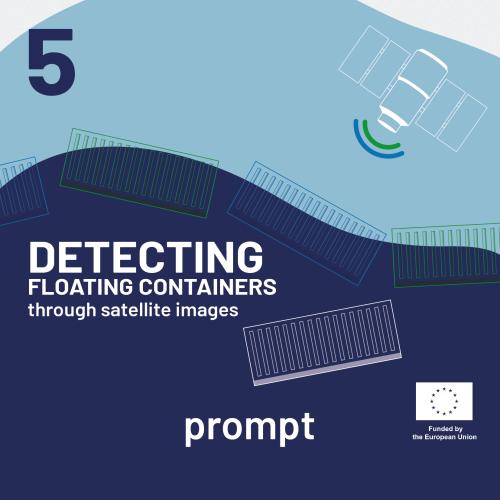05-Detecting Floating Containers Through Satellite Images
Under this task, thanks to the satellite, the team develops and employs a detection mechanism for floating containers, based on satellite imagery. It is a novel and speculative application, and not common in literature, since it poses many challenges, especially on the side of data such as:
- public imaging services, such as those run by the Copernicus programme, usually do not have a high-enough resolution to spot containers, unless very specific conditions are met (see below)
- commercial operators of Very High Resolution (VHR) imagery, usually do not image the Earth continuously, and so not many historical data points are available
- labelled datasets are not available
However, countermeasures are taken to counter the three problems, in particular:
- public imagery will be exploited first, since they are free and allow for preliminary analyses. The likelihood of spotting containers in Sentinel-1 SAR data is low, unless they are larger ones (40 TEU or more), as smaller ones usually are not detected. Also, containers below the surface of water would not appear in Sentinel-1 data. Nevertheless, Sentinel-1 might prove useful, thanks to the capability of its radar to image through clouds. In particular, cargo ships can be detected, and this information will be exploited to further narrow down the area of interest. Optical data, such as 10 m bands from Sentinel-2, can be adopted for further preliminary analysis. These analysis techniques will be based on state-of-the-art vessel detection, and they will be tested to assess their performance on containers detection
- VHR imagery will be acquired, both by tasking new acquisitions, and by searching for archived data. The latter mechanism especially will require polling different providers, to increase the chance of finding historical data
- machine learning techniques will be adopted for container segmentation on VHR imagery. The lack of public or commercial labelled datasets for container segmentation is an obstacle, but rather than adopting a model-based recognition system, which would be the last possible attempt, a dedicated dataset will be constructed by exploiting both related datasets and additional labelling. Transfer learning and data augmentation techniques will be adopted.
The data acquisition and manipulation will take place on the WASDI cloud platform, where it will be possible to run the analysis on demand. WASDI ensures the interoperability of the platform with external systems, such as the rest of the PROMPT system by appropriate mechanisms, which include custom programming libraries and industry standards.
In conclusion; under this task, the team leverages satellite imagery to employ a detection mechanism for floating containers which will help to detect spills of oil and other harmful substances onto the sea. The procedure is uncommon due to its complexity especially on the side of data such as; public imaging services, commercial operators of Very High Resolution (VHR) imagery, and labelled datasets are not available. However, the team adopts befitting counter measures to devise the three challenges, such as exploiting public imagery, VHR imagery both by tasking new acquisitions, and by searching for archived data, and machine learning techniques.
